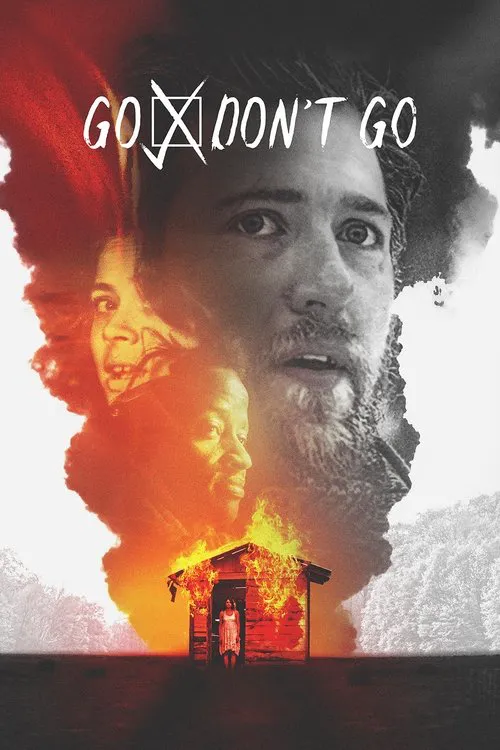Go Don't Go

Plot
As the last remnants of society succumbed to an unknown cataclysmic event, Adam, a seemingly ordinary but introverted young man, finds himself the sole survivor in an apocalyptic world. The film, "Go/Don't Go," is a gripping slow-burn thriller that skillfully weaves together elements of romance, psychological suspense, and existential crisis, immersing the audience in Adam's surreal and disorienting experience. Initially, the story unfolds with Adam in a state of detachment, struggling to comprehend the catastrophic consequences surrounding him. Haunting memories of his lost love, Laura, serve as an emotional anchor, providing a fleeting sense of connection to a life he once knew. As Adam navigates the desolate landscape, he becomes convinced that he is not alone, and that the ghosts of his past are closing in. This pervasive paranoia sets the tone for the film's unsettling atmosphere and Adam's unraveling mental state. Through a series of fragmented and impressionistic sequences, the filmmakers masterfully distill the essence of Adam's trauma and his desperate attempts to hold onto reality. His thoughts oscillate between recollections of Laura and a deepening sense of unease, which threatens to consume him entirely. He begins to question his own sanity, suspecting that his surroundings are merely a product of his fractured mind. As the narrative unwinds, Adam's interactions with the supposed apparitions take center stage. These disembodied characters, representing a manifestation of his own psyche, embody different facets of Adam's troubled personality. Their presence amplifies the sense of claustrophobia and dread, underscoring Adam's desperate struggle for meaning in a world that appears to be slipping away from him. The blurred lines between reality and delusion create a sense of ambiguity, which Adam, much like the audience, finds difficult to decipher. This psychological tension fuels the film's slow-burn atmosphere, building an air of foreboding and unease that permeates every scene. Adam's perceptions become distorted, forcing him to confront the darker aspects of his own consciousness. Through Adam's narrative, the film raises essential questions about the human condition, existence, and the nature of reality. In a world devoid of external stimuli, Adam's inner turmoil becomes the sole source of conflict. His emotional state teeters on the edge of collapse, as he confronts the abyss that stares back at him. The filmmakers' deft handling of the subject matter creates a visceral and deeply unsettling experience, plunging the viewer into the depths of Adam's despair. As the narrative hurtles toward its shattering conclusion, Adam reaches an existential crossroads. Torn between the comforting presence of Laura, which now seems more a product of his imagination than a tangible connection to the past, and the suffocating grip of his paranoia, Adam must confront the ultimate question: how to reconcile his desire for existence with the unyielding fact of his apparent isolation? "Go/Don't Go" is a gripping and unflinching exploration of the human psyche's capacity for survival. Beneath the surface of its narrative, the film probes the darker recesses of the human mind, challenging the viewer to confront the void that lies within. As Adam's world disintegrates around him, the audience is left with a haunting realization: the only constant in an ever-changing universe is the fragility of the human condition. The film's slow-burning tension builds toward a shattering denouement, one that lingers long after the credits roll, leaving an indelible mark on the viewer's psyche.
Reviews
Recommendations



